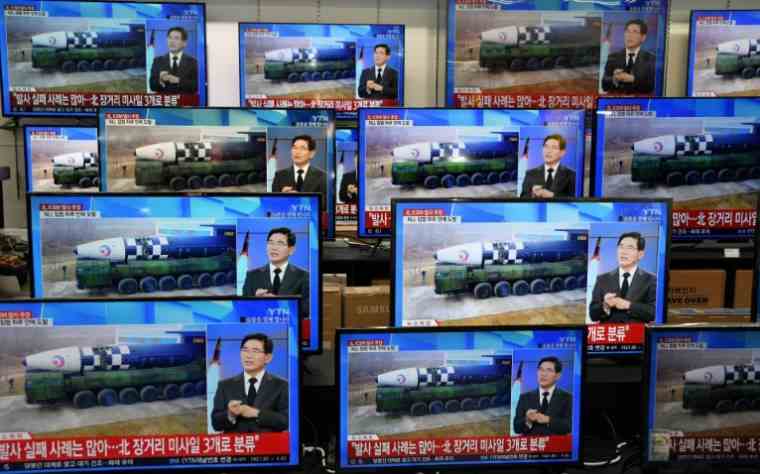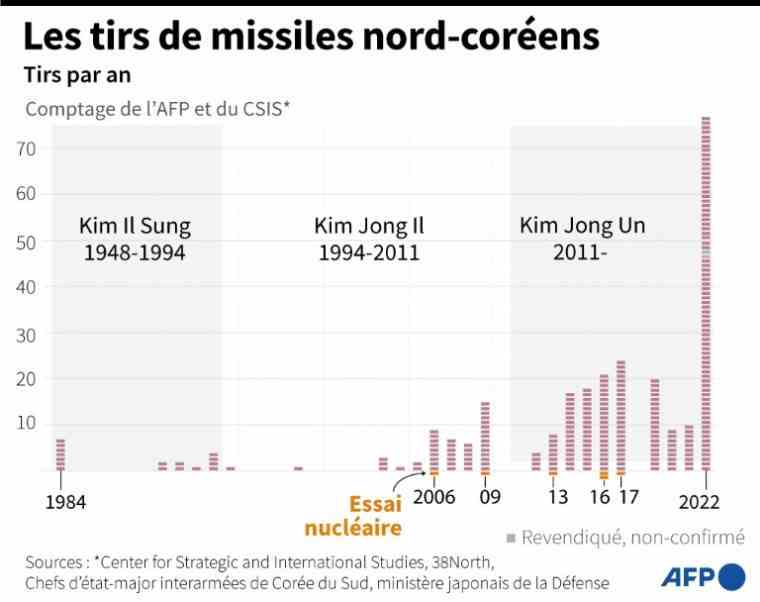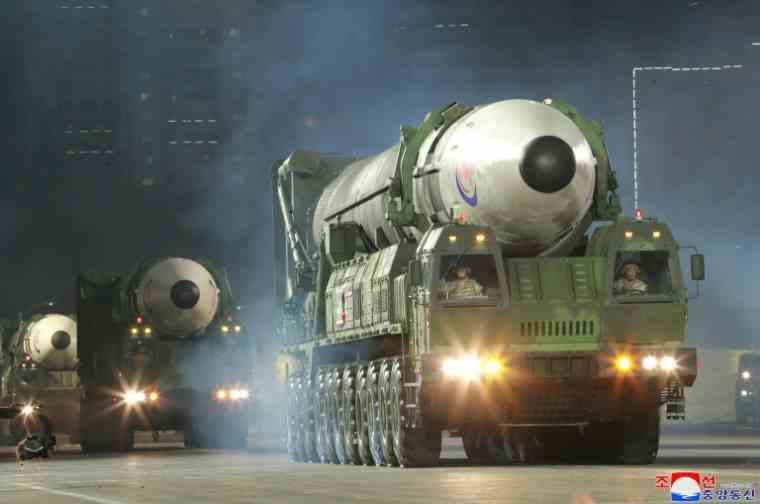The sea terminal on the South Korean island of Ulleungdo, where air alerts sounded after North Korean missiles were fired on November 2-3 (AFP/Anthony WALLACE)
North Korea launched new projectiles on Thursday, including an apparently failed intercontinental ballistic missile (ICBM) and another of an ‘undefined type’, a day after a record salvo of firings that heightened tension In the region.
“North Korea fired a missile of an undefined type,” the South Korean army chiefs said Thursday without further details, a few hours after Seoul announced the continuation of military air exercises with the United States. United.
Continuing these exercises is “a very dangerous and wrong choice”, said Pak Jong Chon, secretary of the Central Committee of the North Korean Workers’ Party, according to a press release relayed by the official KCNA agency.
This launch was preceded by other launches on Thursday, including a ballistic missile launch, which Seoul said failed.
The United States denounced “the illegal and destabilizing firing of an intercontinental ballistic missile”, and the German presidency of the G7 group said it condemned it “firmly”.
According to the South Korean Joint Chiefs of Staff, the first three projectiles – two short-range missiles followed by an ICBM – had been launched Thursday morning from the North towards the Sea of Japan.
“The launch of an ICBM by North Korea was likely to end in failure” during the separation of the second stage of the rocket, said the South Korean army.
According to her, this missile traveled 760 km at a maximum altitude of 1,920 km and at the speed of Mach 15 (15 times the speed of sound).
The other two first missiles traveled about 330 km at Mach 5 and a maximum altitude of 70 km.
Air-raid sirens sounded for the second consecutive day on the South Korean island of Ulleungdo, located 120 km east of the Korean peninsula, local media reported.
An alert was also triggered in northern Japan even though, contrary to the authorities’ initial claims, the missile did not ultimately fly over the archipelago.
According to Defense Minister Yasukazu Hamada, the projectile “disappeared over the Sea of Japan”.

Television screens show a program dedicated to North Korean missiles, on November 3, 2022 in Seoul (AFP / Jung Yeon-je)
“The continuous barrage of missiles day after day is an outrage and cannot be tolerated,” Japanese Prime Minister Fumio Kishida said.
On October 4, a North Korean ballistic missile flew over Japan for the first time in five years.
On Wednesday, North Korea had already fired 23 missiles, one of which had crossed the “Northern Limit Line” (NLL) which extends the inter-Korean land border at sea, while remaining in international waters.
– “Territorial invasion” –

South Korean President Yoon Suk-yeol during a National Security Council meeting on North Korea’s missile launch, in Seoul on November 2, 2022 (South Korean Presidential Office/Handout)
According to the South Korean military, it was the first time since the end of the Korean War in 1953 that a North Korean projectile ended its course so close to southern territorial waters.
South Korean President Yoon Suk-yeol said on Wednesday that the shooting constituted “a de facto territorial invasion”.
This show of force by Pyongyang comes at a time when South Korea and the United States are carrying out the largest air exercises in their history in the region.
The two allies decided Thursday to extend these exercises “in view of recent provocations from the North”, announced the South Korean army.

North Korean missile fire (AFP / )
According to analysts, the exercise, dubbed “Vigilant Storm”, worries Pyongyang because it mobilizes stealth planes F-35A and F-35B.
Devices that “could be used in beheading operations” of Kim Jong Un’s regime, argued Go Myong-hyun, a researcher at the Asan Institute for Policy Studies.
During the summer of 2022, reports of American-South Korean training in lightning “decapitation strikes” against North Korean leaders had indeed circulated.
What aggravate the fears of Pyongyang which already considers the frequent joint maneuvers between the American and South Korean armies as general rehearsals for an invasion of its territory.
“Vigilant Storm” constitutes “an aggressive and provocative military maneuver targeting the Democratic People’s Republic of Korea”, denounced the North Korean regime on Wednesday, which threatened Seoul and Washington to “pay the most horrible price in history”.
The United States and South Korea have been warning for months that North Korea is about to carry out a nuclear test, which would be its seventh.
– Future nuclear test? –
At the end of September, Kim Jong Un’s regime adopted a new doctrine proclaiming the “irreversible” nature of the country’s nuclear power status, making any future talks about its denuclearization impossible, and reserving the right to carry out preventive strikes.
This proclamation was followed, in September and October, by a long series of missile tests, presented by Pyongyang as “tactical nuclear” simulations.
The recent series of firings “are preliminary celebrations for their future nuclear test”, predicted Ahn Chan-il, a researcher specializing in North Korea. “It also looks like a series of practical tests for their tactical nuclear deployment,” he told AFP.

Hwasong-17 intercontinental ballistic missiles (ICBMs) during a military parade at Kim Il Sung Square in Pyongyang on April 26, 2022 (KCNA VIA KNS/STR)
North Korea broke a self-imposed 2017 moratorium on intercontinental ballistic missile testing in March, but has since suffered several setbacks.
Also in March, a Hwasong-17, considered the most powerful ICBM developed by Pyongyang to date, apparently exploded shortly after launch and a fireball was seen in the sky above the northern capital. Korean. And in May, the South Korean military reported an ICBM launch failure.

